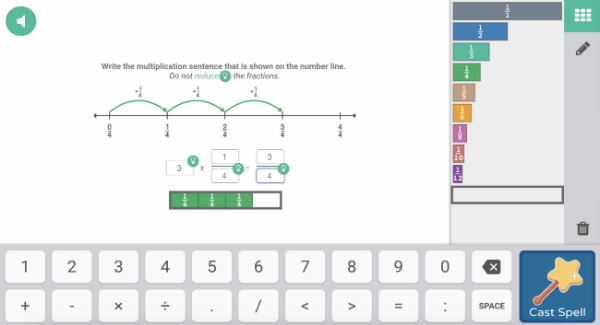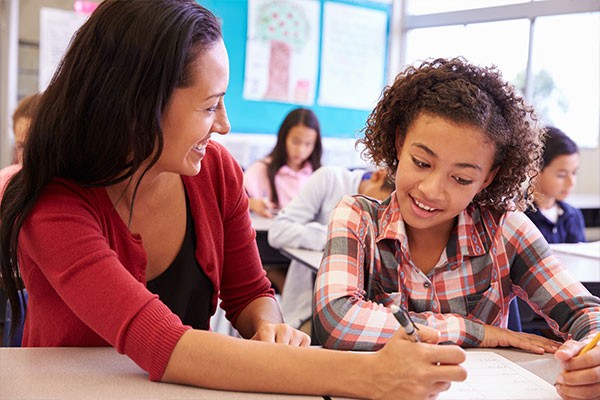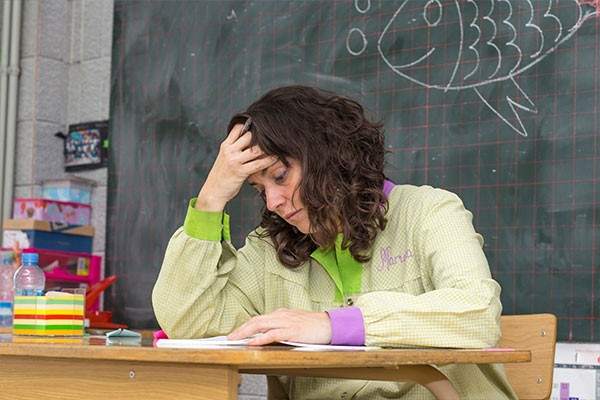Report card что это
105 Report Card Comments to Use and Adapt
Written by Justin Raudys
Teachers
Engage and motivate your students with our adaptive, game-based learning platform!
Just about every teacher agrees: report card comments are important to provide insights and next steps to students and families. But there are few who actually look forward to writing them.
Because every instructor knows working under tight deadlines to create upwards of 20 unique and detailed reports at the end of the year or term isn’t exactly straightforward (or particularly fun). That’s especially true in the era of distance learning.
And while no one at your school knows your students better than you do, writing valuable report card comments for each of them can be a huge challenge.
That’s why we created a list of 105 sample report card comments — starters to help you find ideas, inspiration, and insights while writing your own report cards.
The 105 report card comments in this list will help you:
Report card comment starters
You’ll notice that the report card comments below can act as a springboard for more fully developed ones. But don’t worry, using them you’ll be able to take some of these one-liners and turn them into insightful and actionable next steps!
For example, you’ll be able to take a 1st grade number sense comment like «Your child is able to add and subtract numbers up to 20 using various manipulatives» and transform it into:
Your child is able to add and subtract numbers up to 20 using various manipulatives. This was evident when he was working independently to solve a real-world problem by adding toys in the classroom toy bin. As a next step, they should continue to add to larger numbers to encourage his skills. You can support him by asking him to add his own toy piles at home.
Or taking a responsibility-related learning skill comment from «Your child is able to take responsibility for her own actions both in and out of the classroom» to:
Your child is able to take responsibility for her own actions both in and out of the classroom. She often checks her agenda and day planner to make sure she has all of the necessary materials to complete work at home before leaving. During indoor recess, she takes time to tidy up everything she was playing with.
Notice the difference?
Compared to a single number or letter grade, report card comments can provide even more value to your students and their families. In other words, a number or letter or grade captures the what, while an accompanying comment captures the how.
Depending on the age group or grade level you teach, a letter or grade letter might be enough. However, research in Phi Delta Kappan, the professional journal for educators, suggests:
Comments that identify what students did well, what improvements they need to make, and how to make those improvements, provided with sensitivity to important contextual elements, can guide students on their pathways to learning success and ensure that all learn excellently.
Gather insights into student performance all year long and make report card writing easier with Prodigy, the adaptive math game that students love.
Learning skills (positive comments)
Learning skills (needs improvement)
Math (general comments)
Addition and subtraction
Skip counting
Place value
Comparing numbers
Addition with regrouping
Word problems (math)
As we move into language and literacy, the following sections include starter report card comments which cover reading, writing, oral communication and critical thinking skills.
Language (general)
Reading responses
Reading comprehension
Response journal
Note taking
Distance learning
Tips for teachers to write more effective report card comments
Somewhere around the halfway point to your deadline for report cards, you make your best effort to use time at the end of each week to reflect — and jot down notes — about your students’ performance and class week.
Even just a few minutes of note-taking in the weeks preceding report card deadlines will help to ease your stress when the time comes to write your final comments.
Moreover, having a dated log of information detailed throughout theВ school year will help you remember how students are performing throughout each week, which can be valuable information come parent-teacher conference time.
This will also help to engage and reassure parents who want relevant and detailed commentary about their child’s performance at school.
Use Prodigy to write insightful report cards with a minimum of hassle. Prodigy Math Game is an engaging math adventure for students where success depends on correctly answering adaptive math questions.В
As students play, you’ll get insights into:
Use one of Prodigy’s eight reports to track student progress throughout the year. When the time comes to write report card comments, you’ll have detailed reports on all your students’ achievements.
Just getting started with Prodigy? No problem! The first time students explore the world of Prodigy Math Game, they’ll start completing the Placement Test — without even knowing. Once they’re done, you’ll have a snapshot of the grade level they’re at, what they know and specific skills they still need to work on.
Sign up for your free teacher account today to get started!
Although every report card cannot be glowingly positive, do strive to write in an encouraging and informational tone. As you write constructive report card comments, use encouraging language that focuses on the student’s opportunity for improvement.
For example, instead of describing a student struggling with listening as a “bad listener,” remark that the student “would benefit from listening more carefully.”
Lead your report card comments with the positive comments, followed by areas that need more attention.
Choosing the right format for reporting information will simplify the entire process, while resulting in a clearer and more organized final product.
If you are unclear about your school’s format for report cards, request samples or consult with other teachers or staff members to clarify.
Being open and honest about a student’s performance requires tact and consideration with regard to how you express those comments. Be transparent, and remain mindful that your goal is to improve your students’ learning experience.
Openness and honesty are key to ensuring that experience is the best it can be. If possible, discuss whatВ intervention strategiesВ you can use to help improve the student’s learning outcomes.В
If there is a problem, most parents will be grateful to you for telling them and will want to help you correct it as soon as possible. Many problems that show up at school are also problems noticed at home, so your comments will not surprise parents. Ideally, at some point prior to receiving the progress report, parents have already discussed the problem with you.
If you get stuck completing the comments for a particular student, move on to your other students and return to it later. You will likely have more trouble completing comments for students who have multiple areas needing further improvement and attention.
Feel free to move on and return to those students periodically or as you find the right language to express your insights.
While every report card comment is ultimately about your student, think of your students’ parents or guardians as much as possible and offer suggestions for their participation.
In fact, if you can, keep parents up to date on an ongoing basis. This will help ensure they don’t get caught off guard by any of your comments.
As you make note of your students’ strengths and weaknesses, endeavor to include practical insights into how parents can involve and support their child at home. If possible, make reference to how you use differentiated instruction to support the student in question.
Simple examples of tips for parents include:
As high school educator and teaching comprehension expert Anne Goudvis writes in her book Strategies That Work:
It is important that you include the parents in your comment so they know the child’s education is a joint mission. Sometimes you need to sound firm so that parents know you need their help and that you will not allow their child to continue inappropriate behavior.
It is unlikely that your students or parents will compare their report card comments, but it is still a best practice to aim for unique commentary for each student that reflects each, individual learning outcome.
Report card time is perhaps your busiest period of the year, and it is understandable that you want to simply get them over with.
Despite this, you should make sure to double check all your comments before hitting print and handing them out. All your communications to parents are a reflection of you as a teacher, and should mirror the care and attention you show your students in class.
Make use of your school’s parent portal or email system to let parents know — as needed — that report card time is coming up.
This will help parents be prepared, and will also ensure that any important questions they may have are addressed before the final report cards are delivered.
Record and use classroom anecdotes in your assessments. No matter how involved you are in your students’ progress, it can still be difficult to produce specific examples related to their performance if you haven’t recorded them along the way.
When you notice a positive or negative skill, ability, strength, or weakness in a class activity or assignment, be sure to note it down so that you may refer to it in your report card comments. Likewise, consider noting a sample of a student’s work every week or two.
To help with ease of access, keep ongoing files of this work in a personal folder or use a digital tool such as a Google Doc.
Putting this into practice is a time-saver and helps prevent last-minute stress. A strategy like direct observation and note-taking (as soon as possible) is far more reliable than trying to recall information and behaviors from weeks or months prior.
Key considerations for report card comments at the end of the year
Report card comments should aim to deliver feedback to students and parents that isВ personalized, detailed,В andВ meaningful.
Effective report card comments emphasize and discuss:
Effective report card comments are personalized – customized to each, individual student – and discuss:
Effective report card comments are expressed with clear and simple phrasing, using:
Report Card Comments: Final Thoughts
Common Sense Education observes that «effective parent communication is crucial in helping students learn. But, for busy teachers it can be challenging just to keep up. Transparency and equity are key to managing any communication between home and school.»
Personalized report card comments that are clear, precise, and meaningful areВ essential for informing students and theirВ parents aboutВ what students have learned, what their strengths are and how they can effectively progress.
Among the pressure and deadlines of writing report cards, it can be helpful to keep these key goals in mind.
Get inspired by the report card comment examples — and strategies for success — above to ensure that precision, clarity, and meaning shine through in your report card comments.
When it comes time to hand out your report cards, you can do so with the full confidence that you are doing yourself — and each of your students — the justice your hard work deserves.
Gather student insights on Prodigy
Create or log in to your free teacher account on Prodigy — a standards-aligned, game-based learning platform that assesses student progress and performance as they play. Use Prodigy to motivate student learning, control the questions they answer as they play and collect student learning insights all year long.
Arctic Report Card 2020
The sustained transformation to a warmer, less frozen and biologically changed Arctic remains clear.
Extreme warm air temperatures in the Eurasian Arctic illustrate significant region-wide effects of year-to-year variability and connections across the Arctic environment.
The Arctic Report Card (ARC) provides an annual update on the state of the Arctic’s climate and environment as well as highlights of Arctic science news of the past year. ARC2020 features 16 essays, 11 of which provide updates on a wide range of Arctic science topics, from the past year’s air temperatures and sea ice conditions to the latest in bowhead whale research. Taken as a whole, across a variety of disciplines and viewpoints, the story is unambiguous: the transformation of the Arctic to a warmer, less frozen, and biologically changed region is well underway. Extreme high temperatures in the Eurasian Arctic in spring and summer 2020 provide a clear demonstration of the strong connections within the Arctic environment that characterize this region. Three closely connected essays examine the acquisition of observational data and their use in modeling to understand physical systems in the Arctic. ARC2020 also marks the publication’s 15 th anniversary.
Following are highlights from the 2020 Arctic Report Card. View previous reports.
The 925 hPa layer located just above the surface is used to emphasize large spatial temperature patterns rather than local surface features. NCEP/NCAR reanalysis air temperature data (Kalnay et al. 1996) are obtained from the NOAA Physical Science Lab.
Surface Air Temperature
Changes in air temperature and sea ice (extent, volume, and seasonality) are at the root of changes across the Arctic environment. In a year of many extremes, the annual (October to September) SAT anomaly poleward of 60° N was 1.9°C above the 1981-2010 average and was the second highest on record since at least 1900. This marks the 9 th of the last 10 years when SAT anomalies were at least 1°C warmer than the 1981-2010 mean. Driving this annual extreme were anomalously warm conditions across much of the Eurasian Arctic for most of the first seven months of 2020 and during the summer over the central Arctic basin. These air temperature extremes both contributed to and in part were caused by extremes in the Arctic sea ice. Sea ice loss in spring 2020 was particularly early in the East Siberian Sea and Laptev Sea regions. During June, ice extent in the Laptev Sea dropped to record low levels for that time of year. More broadly, both winter and summer sea ice extent extremes continued declining trends. In 2020, the end of winter extent was the 11 th lowest in the 42-year satellite record and the end of summer extent was the second lowest, 2012 being the record minimum year. Satellite-derived sea ice thickness (available only since 2010) showed both the winter maximum and late summer minimum to be near the lowest in the decade since data collection began. Read more.
Highlights
Coastal Permafrost Erosion
Changes in permafrost coasts are primarily due to erosion (Lantuit et al. 2012). However, coastal change rates have high temporal and spatial variability, which is driven largely by diversity in internal and external factors. For example, sediment composition, permafrost properties, and coastline exposure contribute to the spatial variability in coastline change, while changing hydrometeorological and ocean forcing conditions determine the temporal evolution of coastline change (Shabanova et al. 2018). The highest erosion rates occur in unconsolidated sediment deposits that represent 65% of permafrost coasts in the Arctic (Lantuit et al. 2012). The remaining 35% of permafrost coasts are classified as rocky or consolidated material that exhibit more stability. In unconsolidated permafrost coasts, the presence of ice-rich permafrost is a weak but statistically significant contributor to higher coastal erosion rates (Lantuit et al. 2012). The primary drivers of erosion of ice-rich permafrost coasts are summer warmth and solar radiation (thermo-denudation) and wave action (thermo-abrasion) (Aré 1988). Read more.
Terrestrial Snow Cover
The terrestrial Arctic environment is very sensitive to air temperature at varying time scales, especially during spring and autumn. The snow cover (or lack thereof) exerts a strong control on weather and climate, as well as on the larger ecosystem, through reflection of incoming solar energy and its insulating effect on the ground’s ability to gain or lose heat. Snow accumulation during the 2019/20 winter was above normal across the entire Arctic. However, the exceptional spring warmth across the Eurasian Arctic resulted in the lowest June snow cover extent in this region since the observational record began in 1967. The May Arctic snow cover extent during the 1981-2020 period is decreasing at a rate of 3.7% per decade, with a much higher rate of loss (15% per decade) for June over this same period.
Variably in the seasonality of snow cover is an important control on wildland fire activity in high northern latitudes. Arctic wildfires occur primarily, though not exclusively, in the boreal forest (Taiga), the world’s largest terrestrial biome. In this region wildfires are highly variable in space and time, driven by sub-seasonal drying of fuel over weeks and controlled by climate. Increasing trends in air temperature and fuel availability over the 41-year record (1979-2019) suggest that conditions are becoming more favorable for fire growth, with more intense burning, more fire growth episodes, and greater consumption of fuels. The extreme wildfires in 2020 in Sakha Republic offer another example of the impact of the extreme warm spring and summer air temperatures in the Eurasian Arctic.
Highlights
Sources: SST data are from the NOAA OISSTv2; sea-ice extent and ice-edge data are from NOAA/NSIDC Climate Data Record of Passive Microwave Sea Ice Concentration, Version 3; Peng et al., 2013; Meier et al., 2017.
Sea Surface Temperatures
Ocean surface temperatures (SSTs) in the Arctic during spring and summer are strongly tied to sea ice presence or absence as well as ocean currents and atmospheric parameters. August 2020 mean SSTs were
1-3°C warmer than the 1982-2010 August mean over most of the Arctic Ocean. Exceptionally warm SSTs in the Laptev and Kara Seas distinguished August 2020 SSTs, coinciding with the early loss of sea ice in this region. The strong interannual variability in spatial patterns of SST bears a close relationship to early summer sea ice concentrations because the regions of low sea ice area allow more direct solar heating of the exposed surface waters. August mean SSTs show statistically significant warming trends for 1982-2020 in most regions of the Arctic Ocean that are ice-free in August. Also tied to sea ice and ocean temperature conditions is productivity at the bottom of the marine food web. During July and August 2020, a
600 km long region in the Laptev Sea of the Eurasian Arctic showed much higher primary productivity (
2 times higher for July and
6 times higher for August) than the same months of the 2003-2019 multiyear average.
Air temperatures, storminess, sea ice and ocean conditions are major factors in permafrost coastal erosion. Permafrost coasts in the Arctic make up more than 30% of Earth’s coastlines. A high proportion of Arctic residents live in the coastal zone, where industrial, commercial, tourist, and military presences are also expanding. Since the early 2000s, erosion of permafrost coasts in the Arctic has increased at nearly all observational sites where data extending back to approximately 1960 or 1980 are available. Permafrost coasts along the US and Canadian Beaufort Sea experienced the largest increase in erosion rates, ranging from +80 to +160%, when comparing data from the 1980s and 2000s with the 2010s. Read more.
Highlights
5°C warmer than 1982-2010 August mean values, associated with early seasonal ice loss in these regions and anomalously warm surface air temperatures over northern Eurasia.
Arctic Ocean Primary Productivity: The Response of Marine Algae to Climate Warming and Sea Ice Decline
Autotrophic single-celled algae living in sea ice (ice algae) and water column (phytoplankton) are the main primary producers in the Arctic Ocean. Through photosynthesis, they transform dissolved inorganic carbon into organic material. Consequently, primary production provides a key ecosystem service by providing energy to the entire food web in the oceans. Primary productivity is strongly dependent upon light availability and the presence of nutrients, and thus is highly seasonal in the Arctic. The melting and retreat of sea ice during spring are strong drivers of primary production in the Arctic Ocean and its adjacent shelf seas, owing to enhanced light availability and stratification (Barber et al. 2015; Leu et al. 2015; Ardyna et al. 2017). Recent studies have emphasized that primary production occurs under lower light conditions and earlier in the seasonal cycle than previously recognized (Randelhoff et al. 2020). Other studies suggest that increased nutrient supply have also influenced overall production (Henley et al. 2020; Lewis et al. 2020). Furthermore, while declines in Arctic sea ice extent over the past several decades (see essay Sea Ice) have contributed substantially to shifts in primary productivity throughout the Arctic Ocean, the response of primary production to sea ice loss has been both seasonally and spatially variable (e.g., Tremblay et al. 2015; Hill et al. 2018).
600 km long region in the Laptev Sea of the Eurasian Arctic showed much higher chlorophyll-a concentrations (
2 times higher for July and
6 times higher for August) than the same months of the multiyear average (2003-2019), associated with very early loss of sea ice in spring and summer (see essay Sea Ice).
Maps are from NSIDC at http://nsidc.org/data/seaice_index/
Sea Ice
Arctic sea ice is an important part of the climate system. Its higher albedo reflects much of the incoming solar radiation during the summer, keeping the region cooler than an ice-free environment. The sea ice cover acts as a physical barrier between the ocean and the atmosphere, limiting energy and moisture exchange. Ice formation and melt substantially modify the biogeochemical balance of the upper ocean. Sea ice also acts as a platform for charismatic megafauna and other components of the ecosystem. Finally, it is both a facilitator and hazard to human activities in the Arctic. In 2020, the Arctic sea ice cover continued the declining trends in extent, thickness, and volume.
For sea ice, 2020 was marked by very warm spring conditions (see essay Surface Air Temperature), leading to early ice loss, particularly in the East Siberian and Laptev Sea regions. During June, Laptev Sea ice extent dropped to record-low levels for that time of year, which led to particularly warm sea surface temperatures later in the summer (see essay Sea Surface Temperature). Ocean warmth also led to a slow freeze-up in autumn 2019, which led to warm autumn air temperatures (see essay Surface Air Temperature) and may have helped pre-condition sea ice in the region for the early melt in spring 2020. In contrast to recent years, early season ice loss in the Beaufort and Chukchi Seas was near the 1981 to 2010 climatological average; however, those seas experienced rapid late loss and ended the summer far below average. This late-summer loss in the Pacific sector drove a faster-than-normal late-August and early September ice loss and had implications for primary productivity (see essay Ocean Primary Productivity). Read more.
Highlights
Bowhead Whales: Recent Insights into Their Biology, Status, and Resilience
As an example of the impact of changing conditions on marine mammals, ARC2020 includes an essay on bowhead whales, one of the iconic megafauna of the Arctic and the only «true» arctic baleen species, with a range confined to icy sub-arctic and arctic waters. They have been a staple resource for coastal Indigenous peoples from the Russian Far East to Greenland for millennia. Nearly hunted to extinction by commercial whaling in the 19th and 20th centuries, populations in the Pacific Arctic and East Canada/West Greenland region are thought to have now recovered to early 19th century levels. The population size of bowheads in the Pacific Arctic has increased in the past 30 years likely due to increases in ocean primary production as well as the northward transport of the zooplankton on which they feed. Read more.
Highlights
Tundra Greenness
Tundra productivity (i.e., greenness) is sensitive to summer air temperature but in complex ways, with other factors playing a significant role, such as the characteristics and timing of the spring snow retreat. In North America, tundra productivity for the 2019 growing season rebounded strongly from the previous year, in tandem with record summer warmth following the cold summer of 2018. Since 2016, greenness trends have diverged strongly by continent; peak summer greenness has declined sharply in North America but has remained above the long-term mean in Eurasia. (Note that unlike other ARC Vital Signs, satellite-based tundra vegetation analysis lags a year behind other essays due to data processing constraints. Read more.
Highlights
Projection is lambert azimuthal equal-area North Pole. Figure by Zav Grabinski. *MODIS data are only through June 2020, due to a delay in processing following a sensor outage.
Wildland Fire in High Northern Latitudes
Despite the low annual temperatures and short growing seasons that are characteristic of high northern latitudes (HNL), wildland fire is the dominant ecological disturbance within the region’s boreal forest, the world’s largest terrestrial biome. The boreal forest, also known as Taiga, is the band of mostly coniferous trees that stretches across the area north of the July 13°C isotherm in North America and Eurasia. Wildland fires also impact the tundra regions bordering the Taiga. This brief report updates our previous contribution to Arctic Report Card 2017. It summarizes evidence on variability and trends in fire disturbance in HNL, describes the fuels that characterize boreal and tundra ecosystems, and outlines how climate and subseasonal fire weather conditions in HNL influence the extent of area burned in a given year. Read more.
Highlights
About the Arctic Report Card 2019
The Arctic Report Card (ARC) has been issued annually since 2006. It is a timely and peer-reviewed source for clear, reliable, and concise environmental information on the current state of different components of the Arctic environmental system relative to historical records. The ARC is intended for a wide audience, including scientists, teachers, students, decision-makers, and the general public interested in the Arctic environment and science.
ARC 2020 contains 16 essay contributions prepared by an international team of 134 researchers from 15 different countries. As in previous years, independent peer review of ARC 2020 was organized by the Arctic Monitoring and Assessment Programme (AMAP) of the Arctic Council.
Thoman, R. L., J. Richter-Menge, and M. L. Druckenmiller, Eds., 2020: Arctic Report Card 2020. Arctic Report Card 2020.












